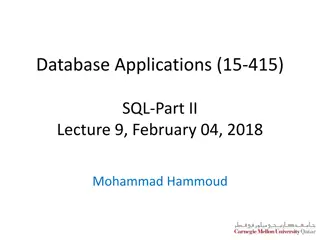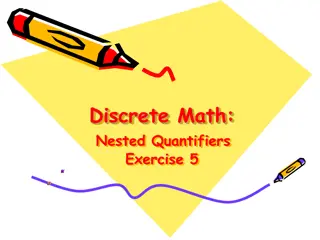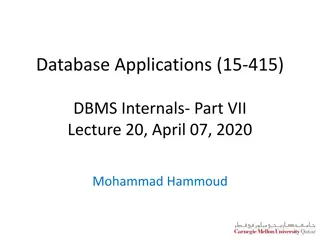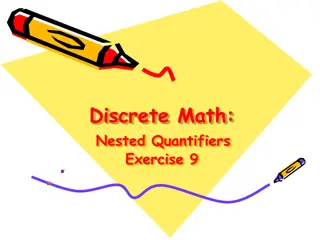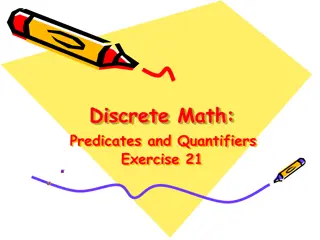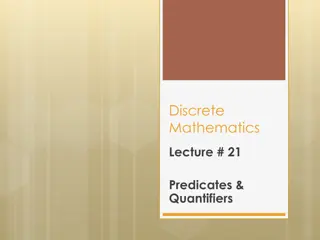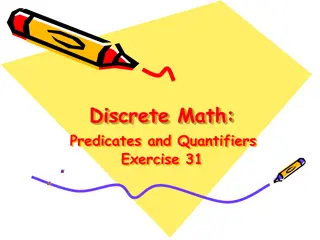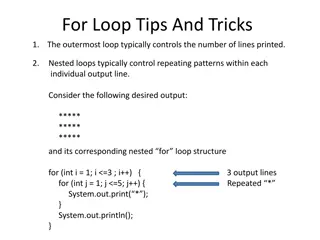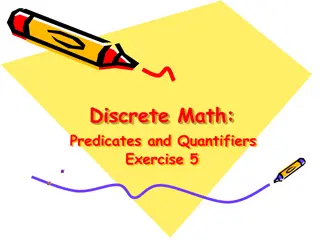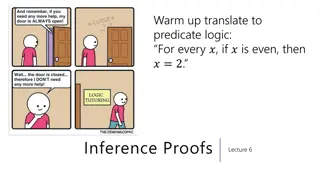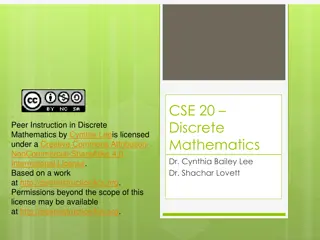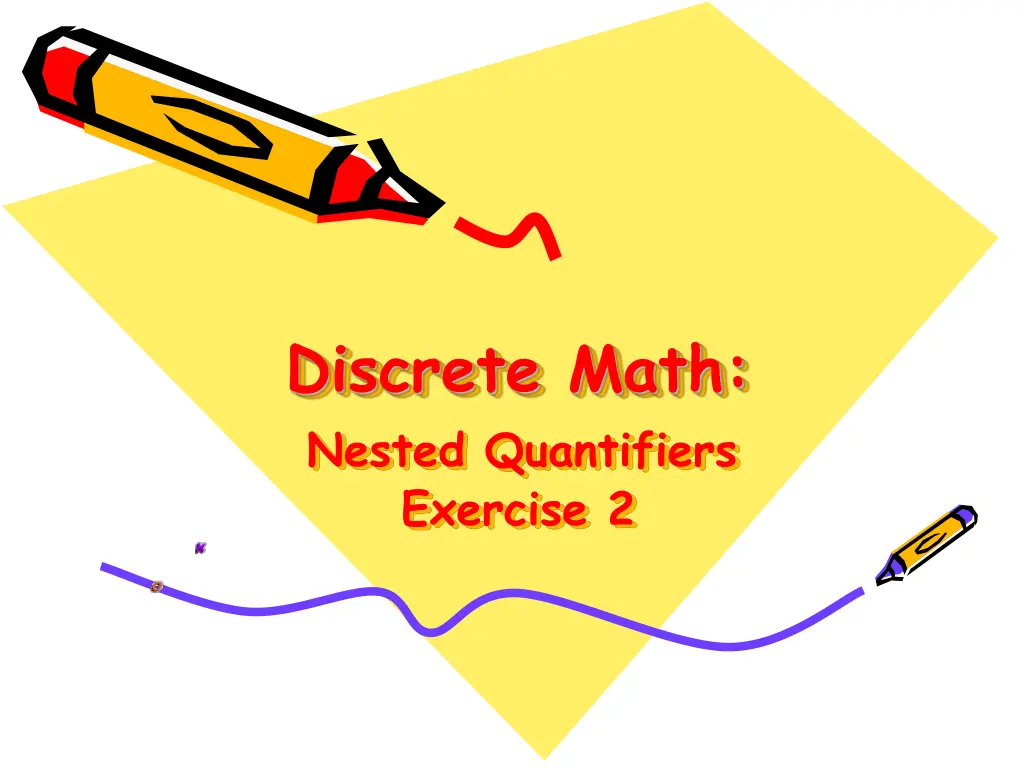
Discrete Mathematics Exercise: Nested Quantifiers
Explore an exercise involving nested quantifiers in discrete mathematics, where students send email messages to each other within a class. Understand the English expressions for different quantifications and their interpretations. Get insights into the nuances of existential and universal quantifiers in the context of student communication.
Download Presentation

Please find below an Image/Link to download the presentation.
The content on the website is provided AS IS for your information and personal use only. It may not be sold, licensed, or shared on other websites without obtaining consent from the author. If you encounter any issues during the download, it is possible that the publisher has removed the file from their server.
You are allowed to download the files provided on this website for personal or commercial use, subject to the condition that they are used lawfully. All files are the property of their respective owners.
The content on the website is provided AS IS for your information and personal use only. It may not be sold, licensed, or shared on other websites without obtaining consent from the author.
E N D
Presentation Transcript
Discrete Math: Nested Quantifiers Exercise 2
Exercise Let Q(x, y) be the statement x has sent an e-mail message to y, where the domain for both x and y consists of all students in your class. Express each of these quantifications in English. a) x yQ(x,y) b) x yQ(x,y) c) x yQ(x,y) d) y xQ(x,y) e) y xQ(x,y) f) x yQ(x,y)
Solution It is useful to keep in mind that x and y can be the same person, so sending messages to oneself counts in this problem. a) Formally, this says that there exist students x and y such that x has sent a message to y. In other words, there is some student in your class who has sent a message to some student in your class. b) This is similar to part (a) except that x has sent a message to everyone, not just to at least one person. So this says there is some student in your class who has sent a message to every student in your class. c) Note that this is not the same as part (b). Here we have that for every x there exists a y such that x has sent a message to y. In other words, every student in your class has sent a message to at least one student in your class.
Solution d) Note that this is not the same as part (c), since the order of quantifiers has changed. In part (c), y could depend on x; in other words, the recipient of the messages could vary from sender to sender. Here the existential quantification on y comes first, so it's the same recipient for all the messages. The meaning is that there is a student in your class who has been sent a message by every student in your class. e) This is similar to part (c), with the role of sender and recipient reversed: every student in your class has been sent a message from at least one student in your class. Again, note that the sender can depend on the recipient. f) Every student in the class has sent a message to every student in the class.
References Discrete Mathematics and Its Applications, McGraw-Hill; 7th edition (June 26, 2006). Kenneth Rosen Discrete Mathematics An Open Introduction, 2nd edition. Oscar Le in A Short Course in Discrete Mathematics, 01 Dec 2004, Edward Bender & S. Gill Williamson




